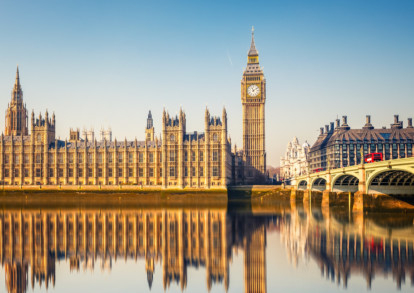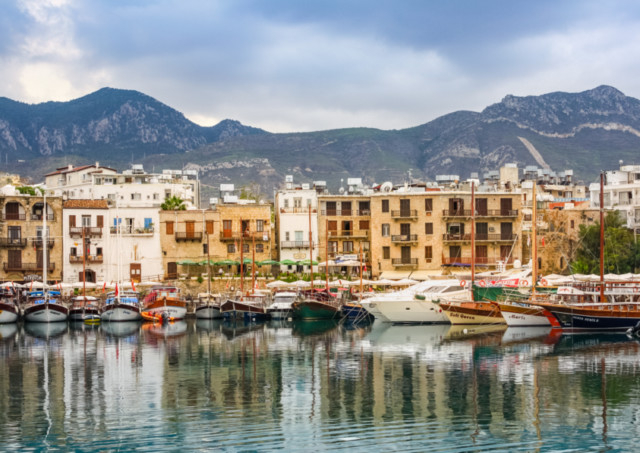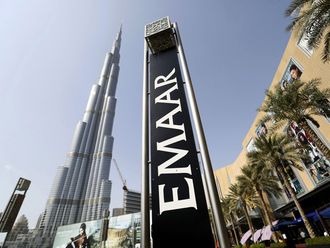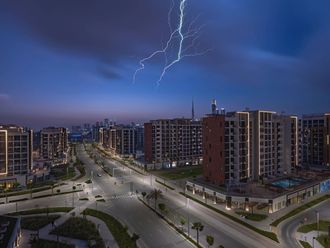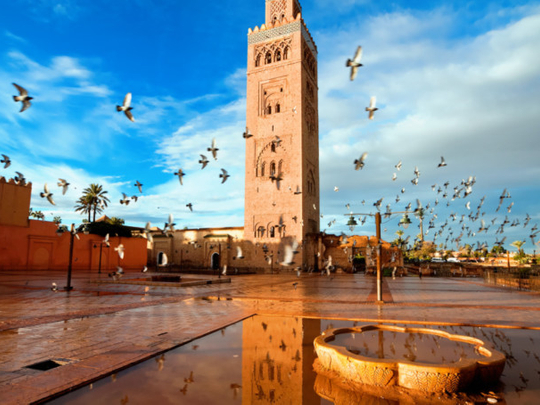
Despite a fall in oil prices and economic attention turning increasingly inwards, investors from the still abundantly affluent GCC countries keep value hunting on the international property market. Political and economic developments such as a looming Brexit, a new administration in the US, demonetisation in India, the refugee crisis in Europe or the tense situation in Turkey are not holding GCC investors back from looking for good real estate deals, and outbound investments are streaming steadily.
Exact figures are hard to come by since there are no capital transfer limits from GCC states and, therefore, no official records on overseas property investment. Globally, according to CBRE, outbound commercial property investment flowed mainly into hotels, offices and retail property, with New York, London, Hong Kong, Paris, Milan, Atlanta, Washington, Tokyo, Sydney and Frankfurt being the preferred destinations, while investment into residential property is focusing on other locations.
As Dubai hosts the International Property Show next week, real estate brokers and realty expo organisers identify some of the current hotspots for outbound residential real estate investment from the Middle East.
London and UK
The Brexit referendum and the increased stamp duty have not been able to curb Arab investor interest in the UK capital. Actually, the fall in the value of the pound relative to the US dollar and dollar-pegged currencies outweighs concern about the UK possibly leaving the EU. “We are still seeing strong demand for London from the GCC and also into the outer areas for GCC investors driven by a search for higher yields,” says Victoria Garrett, Partner at Knight Frank Middle East. “In terms of a safe haven for investment from the GCC, London is still the number one destination for high-net-worth individuals looking to live, work and educate their children. London offers opportunities for investment from studios to let in developing hotspots to trophy asset penthouses in prime central locations.”
In fact, while prices in the prime central London market slipped by 6.3 per cent last year as changes to the stamp duty weakened demand, the final quarter saw activity strengthen as buyers adjusted to the new tax burden. The weaker pound has also led to a value hunt for long sought-after locations, for example Mayfair, making this exclusive area more financially accessible.
It is also understood that Middle East property investors in London are not really concerned that much about Brexit. “We do not get the impression that London is a springboard to major cross-border EU deals by Middle Eastern investors,” says Jonathan Lawrence, partner in the London office of global law firm K&L Gates. Thus, the UK possibly leaving the EU doesn’t really influence buying decisions.
Richard Bradstock, director and head of Middle East at international property investment firm IP Global, is looking at the broader UK market and not just London.
“With the results of the Brexit vote and the sharp fall of the pound, now is the perfect opportunity for dollar-pegged Middle East investors to tap into the long-term potential of the UK market,” he says. “We believe the ‘safe haven’ element is likely to remain a permanent fixture for the UK market, as the exchange rate will bounce back in time, which is why this ‘Brexit discount’ is a short window of opportunity.”
Bradstock directs his clients to other UK destinations, namely Manchester and Liverpool. “Manchester is one of the strongest buy-to-let cities in the UK,” he says. “Not only are 63 per cent of households renting, which is 24 per cent above the UK average, but in the extended city centre four out of five apartments are rented. In Liverpool, property demand remains strong, with a 6 per cent price growth in June to September last year. We believe demand is likely to rise further as the population of Liverpool is predicted to grow from 870,000 to 1.6 million by 2040.”
India
Property investment in India originating from the GCC is interestingly not driven by GCC sovereign wealth fund or wealthy individuals, but by Indian expats who repatriate their earnings. “The 2.6-million strong Indian expatriate community in the UAE pumped $1.69 billion (Dh6.21 billion) into the Indian real estate market in the first nine months of 2016,” Ajmer S. Kairon, CEO of Raffles Residency, a Singapore-owned developer focusing on the Indian residential property market, tells PW.
“The Indian growth story remains one of the more positive ones despite global slowdowns,” says Kairon. “That is the prime reason for Indian real estate to continue to be attractive to foreign investors. The real estate sector was at the forefront of the government agenda during the budget announcement.”
Indian cities such as Bangalore, Mumbai, New Delhi, Hyderabad, Chennai and Pune appear as preferred locations for investors, with a few luxury developments also attracting the affluent. Particularly, Bangalore has been the fastest-growing city in India over the past few decades, where IT has been the major growth driver responsible for aggressive real estate development.
“The introduction of pro-growth initiatives such as the Real Estate Regulation and Development Act last year is expected to create positive sentiment as far as homebuyers are concerned,” says Sunil Sharma, vice-president of marketing and CRM at Mahindra Lifespace Developers, one of the most reputed residential property developers in India. “This is an opportune time to invest in property in India. Homebuyers can benefit from attractive payment plans for under-construction projects, as well as lucrative offers for ready-possession apartments. The fact that India remains among the world’s fastest-growing major economies adds to the attractiveness of Indian real estate as an investment option.”
Cyprus
The small Mediterranean island of Cyprus has developed into somewhat of an insider tip for investors who want to combine the convenience of a holiday home or the purchase of a rental property on an island with a pleasant climate and a very advantageous residency programme. Cyprus recently amended it citizenship-by-investment scheme, an important part of which is a citizenship-by-investment option especially designed for property investors. It grants citizenship — and with it the right to live, work, study and invest in all 28 EU countries — to those who invest a minimum of €2 million (Dh7.93 million) in real estate. For a smaller investment of €300,000, Cypriot residency is granted.
Morocco
Morocco recently started to attract GCC investors to its real estate market, following investments in other sectors such as tourism, energy, construction and agriculture. Morocco is so far the only country in the Maghreb that has benefitted from such a large increase in investment from the GCC in the last few years, after the country started to ease its formerly red tape-ridden investment and registration procedures. The country is also attractive for Middle East investors due to its distinguished culture influenced by its Berber, Arabian and European heritage.
That said, property in Morocco can still be had for reasonable prices as the country is currently running through a period of re-adjusting real estate values after years of prices increasing. Experts see this as a window of opportunity: while Morocco’s economy grew a lacklustre 1.8 per cent last year, the lowest in 17 years, it is expected to accelerate and get back on track in the next two years, with projected GDP growth rates of 4.8 per cent this year and 4.2 per cent next year.
Destinations to look at are certainly Marrakesh with its beautiful mosques and opulent palaces and gardens. Other hotspot are Rabat, Casablanca and Fez, while Tangier, the country’s most important port city on the Strait of Gibraltar and gateway to Europe, recently saw a number of upscale villa and seaside luxury property projects by European and other international developers for prices half of those in European hotspots at the French or Spanish coast.
Philippines
The Philippine property market, similar to India, has received a big boost from the Filipino expat community in the GCC. Surveys found that around a fifth of Filipinos working in the GCC are planning to invest their savings in property on the archipelago for their own use and to earn rental income. The Philippine population has just crossed 100 million, increasing demand for urban dwellings especially from young professionals and families. Another phenomenon is the growing number of retirees and other foreign buyers who want to live and do business in the Philippines and benefit from the relaxed property ownership regulations and long-term visas, as well as the moderate living costs and the warm climate.
In exceptional cases, wealthy GCC investors have been looking into the possibility of acquiring private islands and converting them into tourism free zones, but negotiations in this regard are just in the nascent stage.
There are a number of developments mainly in the urban area of Metro Manila, Cebu City and in the provinces of Laguna, Bulacan, Cavite, Iloilo and Davao, as well as holiday homes scattered across the many islands. A few districts in Manila have developed into nerve centres of the real estate sector. One is Bonifacio Global City, a financial district in Makati surrounded by office towers housing multinational companies, which has experienced quite a number of premium developments mainly targeting the well-off crowd.
Cebu City has emerged as a hot property market for its well-salaried business process outsourcing workforce, apart from being a popular retirement destination.
Honourable mentions
The US remains interesting, although it is unclear whether the current administration intends to change legal frameworks with regards to immigration or the residential status of an investor. “Trendy neighbourhoods such as New York’s Lower East Side have traditionally been overlooked for more established areas,” says Dana Salbak, head of research in the Middle East and North Africa at Knight Frank. “However, recent housing developments such as the $1-billion (Dh3.67 billion) Essex Crossing Development in New York City are acting as catalysts for wider gentrification.” Bradstock, meanwhile, sees a “hidden gem” in Chicago, which he expects to be a key US property investment destination this year.
“The city has the sixth highest GDP among world cities and is diversified across a variety of markets that include finance, technology, telecommunications and transportation,” says Bradstock, adding that since July 2013, average condo prices have risen 16.2 per cent.
Other promising neighbourhoods mentioned by Knight Frank are the 10th Arrondissement in Paris, Woodstock in Cape Town and Mediaspree in Berlin, an office and residential development inspired by London’s Canary Wharf district and currently one of the largest property investment projects in Germany’s capital. Salbak also sees “strong appetite” for holiday property in Cannes on the French Riviera and around Lake Geneva in Switzerland.



